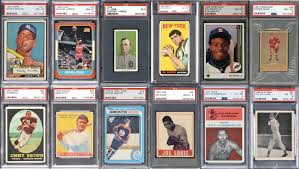Baseball cards hold an esteemed place in the hearts of enthusiasts, embodying the sport’s history, legends, and moments frozen in time. Grading these cards has become a pivotal aspect of the collecting landscape, revolutionizing the way collectors value, preserve, and trade these iconic pieces of memorabilia.
The Evolution of Graded Baseball Cards
In the early days of card collecting, assessing a card’s condition relied heavily on individual interpretation. However, the emergence of professional grading companies transformed this practice. These companies employ experts who meticulously evaluate cards, considering factors like centering, surface quality, corners, edges, and overall presentation.
The Significance of Grading
1. Authentication and Protection
- Grading ensures the authenticity of cards and offers protection against counterfeits, with tamper-proof encapsulation ensuring their integrity.
2. Standardized Valuation
- Graded cards receive a standardized grade (often on a scale from 1 to 10) that serves as a universal benchmark for assessing their worth in the market.
3. Preservation of History
- Encapsulation in graded cases safeguards cards, preserving them for future generations and maintaining their condition over time.
The Impact on Collectors and the Market
Graded baseball cards wield substantial influence:
1. Rarity and Desirability
- Higher-graded cards of legendary players, rare editions, or pivotal moments command immense desirability and heightened market value.
2. Investment Potential
- Well-graded cards, especially from significant eras or featuring iconic players, often appreciate in value, making them potential investment assets.
3. Collecting Sentiment
- For collectors, graded cards offer a tangible connection to baseball history, serving as prized possessions and cherished collectibles.
The Grading Criteria
Grading companies assess baseball cards based on specific criteria:
1. Card Condition
- Evaluation of wear, creases, surface imperfections, or any damage that might affect the card’s appearance and value.
2. Centering and Alignment
- Precision examination to determine how well the card’s image is centered within its borders.
3. Surface Quality
- Inspection for scratches, print defects, or other blemishes impacting the card’s visual appeal.
The Collector’s Approach
For collectors navigating graded baseball cards:
1. Research and Knowledge
- Understanding grading companies, their grading scales, and the factors influencing card values aids in informed decision-making.
2. Authentication Importance
- Recognizing the significance of authentication and grading in preserving card value and marketability.
3. Budget and Passion
- Balancing affordability with passion, especially for sought-after or higher-graded cards, enhances the collecting experience.
Conclusion: Embracing Baseball History
Graded baseball cards encapsulate the essence of America’s favorite pastime, serving as gateways to treasured moments and legendary players. The process of grading these cards has elevated the collecting experience, offering authenticity, preservation, and standardized valuation. For collectors, the allure lies not only in the card’s grade but in the stories and memories they represent, making each graded baseball card a timeless piece of baseball’s rich history.

